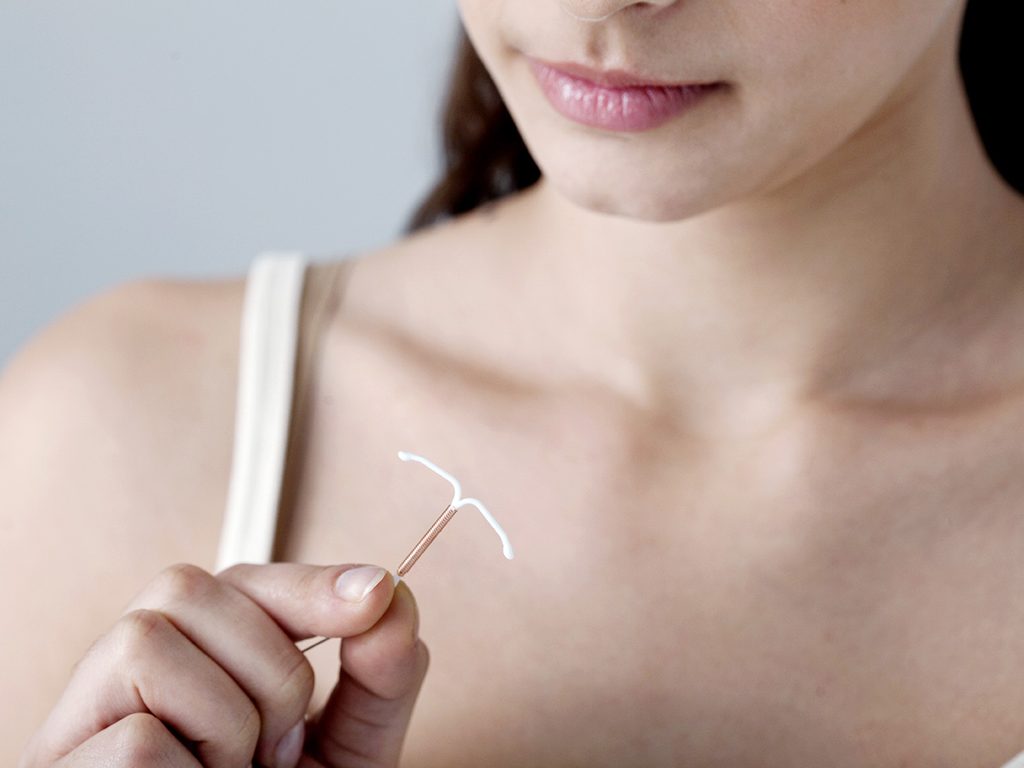8 Facts About IUDs You Should Know

Is an IUD the best method of birth control for you?
IUDs are becoming more popular due to this generation of women, says Dr. Unjali Malhotra, medical director for B.C.’s Options for Sexual Health. Worldwide, the intrauterine device is one of the most common forms of birth control. Here’s what you should know about it.
There are two kinds of IUDs
Copper IUDs are the conventional form of the contraceptive. This T-shaped device with strings attached is inserted into the uterus by a doctor to prevent sperm from fertilizing an egg. The copper IUD can be left in place for three to five years.
Hormonal IUDs, such as Mirena, release a low dose of progestin directly into the uterus. This device is also T-shaped, has strings attached and is inserted into the uterus by a doctor. It can remain in place for five years.
IUDs don’t cause pelvic infections
“There’s a misconception that IUDs cause pelvic infections, but that’s not the case,” says Dr. Sheila Dunn, research and program director at the Bay Centre for Birth Control in Toronto. This birth control method got a bad rap in the 1970s because of a model that was on the market at the time called the Dalkon Shield. “The string on the Dalkon Shield was a braided, thick string and if you got an infection, even vaginally, the string could introduce it into your uterus and it could turn into a serious uterine-pelvic infection,” says Malhotra. However, the strings on today’s IUDs are very thin and can’t carry infections. “There’s also been a lot of research conducted over the last few years that has shown that IUDs do not increase your risk for pelvic infections, even if you have an STI,” she adds. However, there is a slightly increased risk of infection associated with the insertion of the IUD and in the first 20 days after the procedure.
Most women can use an IUD at any age
In the past, IUDs weren’t recommended for younger women who had not been pregnant. However, Dunn says that’s not the case today. “IUDs are a very acceptable method for women whether or not they’ve had a previous pregnancy,” she says. Malhotra notes that she inserts IUDs for women of all ages, from teenagers up to women who are menopausal. “The majority of my patients who use IUDs have not had children,” she says.
The hormonal IUD is as effective as getting your tubes tied
The Mirena is 99.4 percent effective in preventing pregnancy and tubal ligation (sterilization) is 99 percent effective. However, while getting your tubes tied is considered permanent birth control, you can become pregnant as soon as you remove the IUD. (Related: Here’s what an ob-gyn wants you to know about fertility.)
Using an IUD won’t make you infertile
“It was thought that if you got an STI it would latch on to the IUD and cause a pelvic infection that would make you infertile, but that’s been squashed,” says Malhotra. While an untreated STI can cause an infection that may lead to infertility, the IUD has been shown to have no impact on the progression of the infection. Note that like any form of birth control that’s not a condom, IUDs do not protect against STIs.
The hormonal IUD causes fewer side effects than the pill
“Short-term bleeding, breast tenderness and acne are the most common side effects I see, but they usually go away in the first three or four months. After that side effects are minimal to none,” says Malhotra.
She adds that progesterone released locally into the uterus has health benefits beyond birth control. “Progesterone is very good for your uterus because it can prevent and treat many pelvic diseases,” she says. Those include heavy menstrual bleeding, polyps, fibroids, and pre-cancerous lesions of the uterus.
Although the copper IUD does not release any hormones, it is associated with increased menstrual bleeding and more painful cramping during periods. (Related: These are the period mistakes you’re making every month.)
There are ways to make IUD insertions more comfortable
Some women may experience a sharp pain or cramping while the IUD is being inserted, but there are ways to make the process more comfortable. Talk to your doctor about the possibility of freezing your cervix or using tablet to open it up overnight. Malhotra also suggests taking ibuprofen about 10 minutes before the procedure to alleviate some of the discomfort.
There are some risks associated with IUDs
If you do become pregnant while using an IUD, there is a high risk that the pregnancy will be ectopic — that’s when a fertilized egg begins to develop inside the Fallopian tubes and not the uterus. Though this condition is treatable, it can be fatal to a woman if not attended to by a doctor.
There is a one percent chance of a perforation of the uterus (minor trauma to the uterus) when the IUD is inserted. This risk increases slightly in the extremes of reproductive ages (younger and older women) when the opening of the uterus (the cervix) is thicker or the uterus itself is thinner.
Bottom line? If you’re looking for a new method of birth control, an IUD could work for you. Talk to your doctor about whether it’s a good option.
Next, find out what you need to know before going off of birth control.




